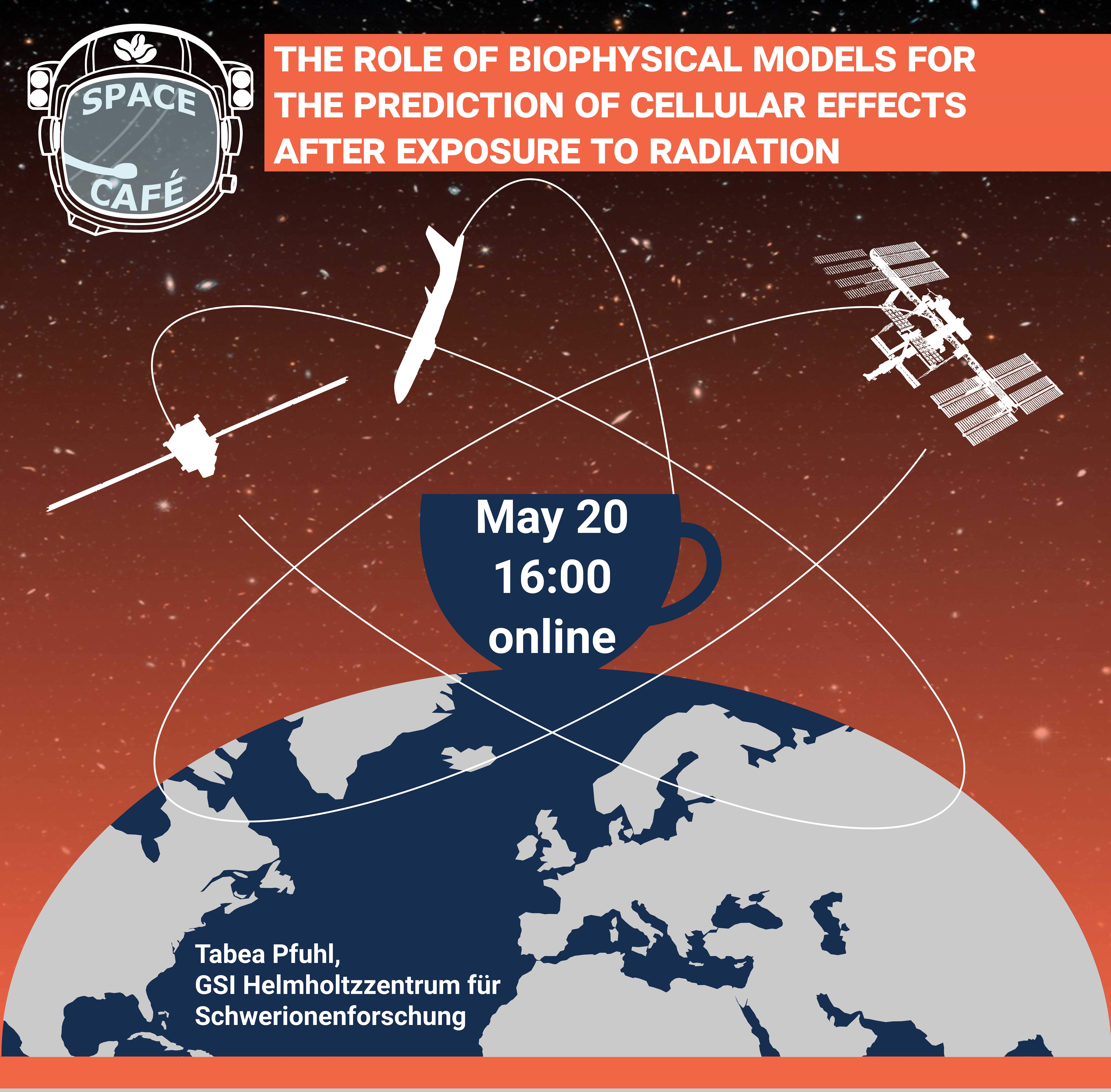The role of biophysical models for the prediction of cellular effects after exposure to radiation

Radiation is one of the main obstacle for space travels, but has proved useful for cancer therapy treatments. In both cases, predicting the effects after irradiation is crucial for risk assessment and treatment plans.
Learn more about the Local Effect Model (LEM) at our next event on May 20, 2021.
Please be aware that this event will exceptionally take place at 16:00, via Zoom. Registration is mandatory at the end of this page.
More about Space Café event series.
Description
Radiation is still one of the main showstoppers for human long-term travel to deeper space. However, next to the hazardous character of radiation in the context of space research, radiation can also be applied beneficially in cancer therapy treatments. In both cases, the prediction of the effects after irradiation is crucial. On the one hand, effect prediction allows performing risk assessments or developing shielding concepts for space research. On the other hand, the knowledge about the effectiveness of different radiation species is needed to optimize treatment plans for cancer patients. A model, which enables such a prediction for ion radiation is the Local Effect Model (LEM), which is currently applied for carbon ion therapy in clinics. This talk gives a general overview of the necessity of biophysical models in radiobiology research as well as a deeper insight in the Local Effect Model with corresponding approaches for further model optimizations.
Speaker

Tabea Pfuhl studied Biophysics at the Goethe University in Frankfurt, Germany, and completed her Master’s thesis at GSI Helmholtzzentrum für Schwerionenforschung near Frankfurt in the Space Radiation Physics group of the Biophysics department. In her thesis, she conducted measurements and simulations of the build-up effects in proton Bragg curves. Since 2018, Tabea works on her PhD project at GSI, which includes the validation and optimization of the Local Effect Model (LEM). The LEM was initially developed in the 1990s at GSI for cancer therapy with carbon ion radiation. Such a model is necessary in treatment planning in order to include the enhanced relative biological effectiveness (RBE) of carbon ions.